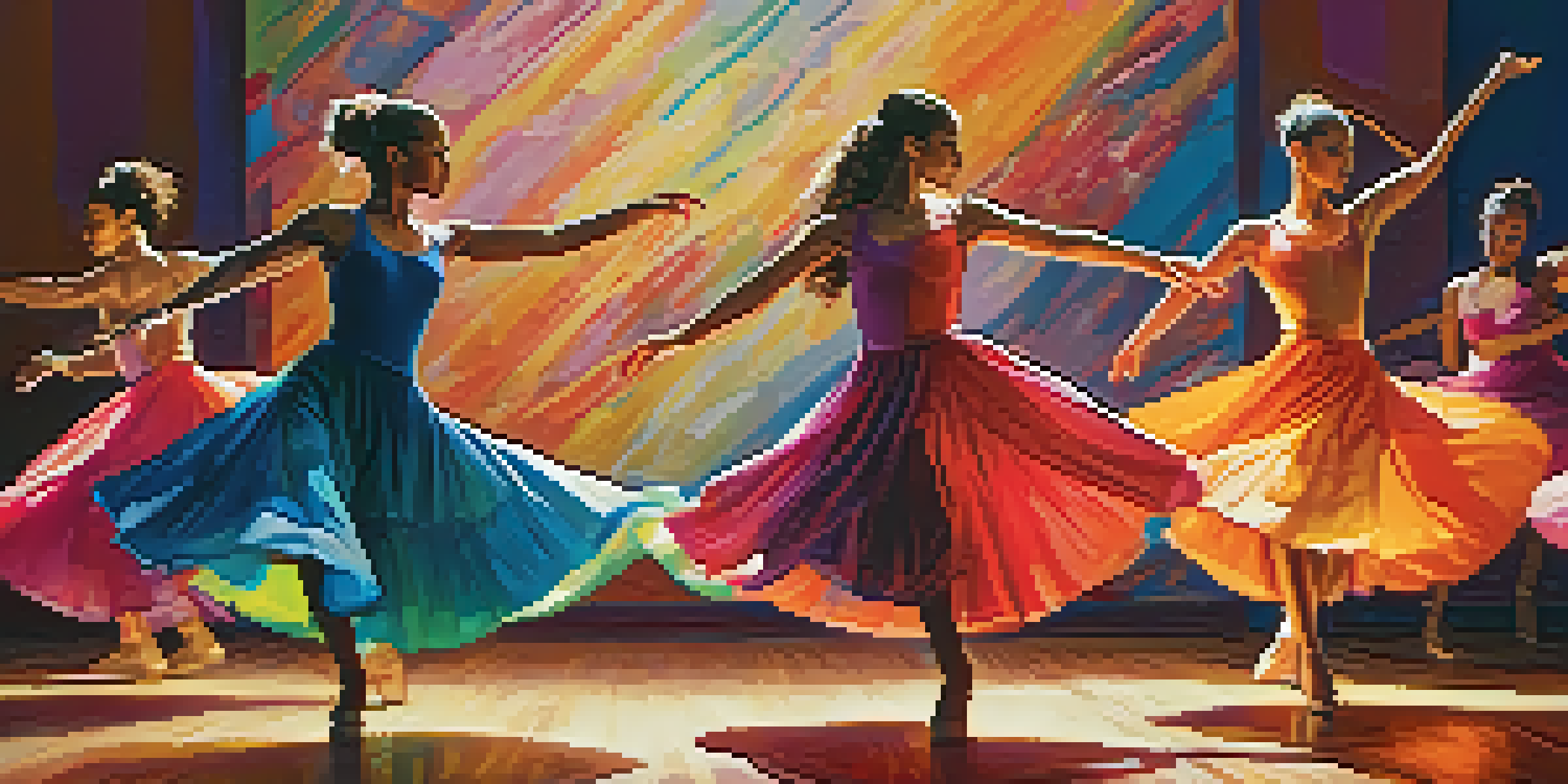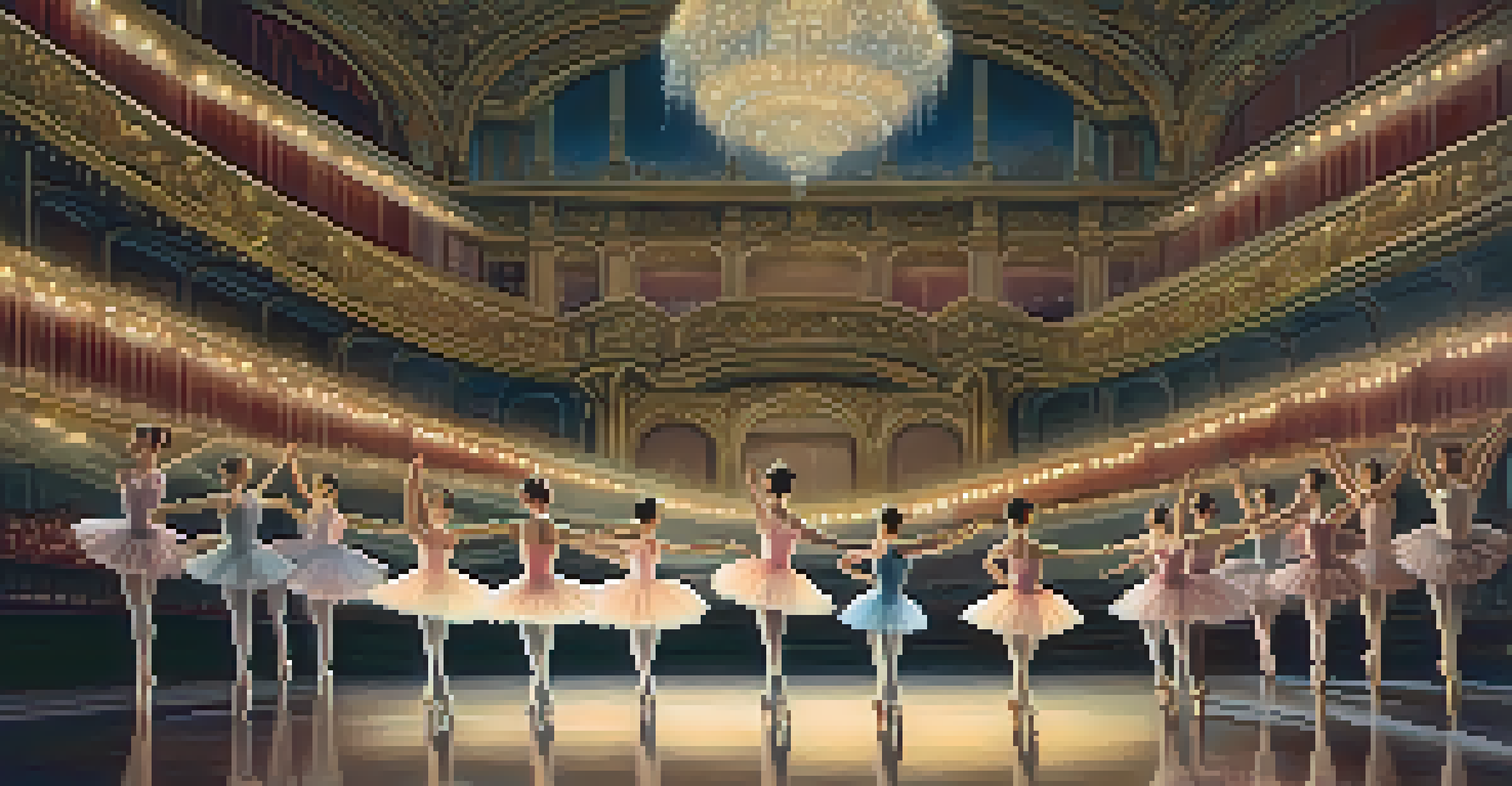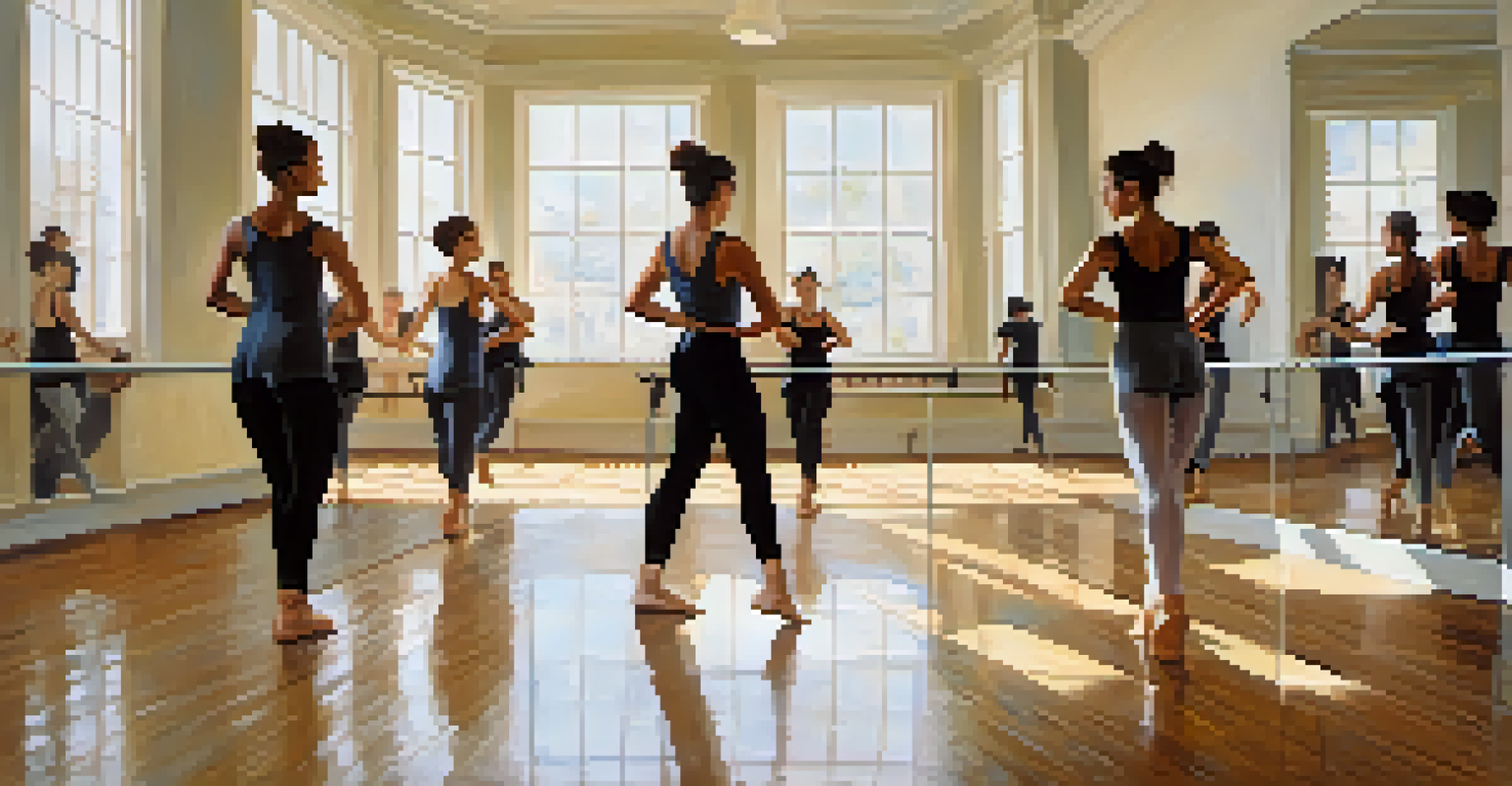The Intersection of Costume Design and Dance Choreography

The Role of Costume Design in Dance Performance
Costume design plays a crucial role in shaping the identity of a dance piece. It not only enhances the visual appeal but also reflects the characters and themes being portrayed. For example, a flowing gown in a ballet performance can evoke grace and elegance, while more structured outfits may suggest rigidity or control.
Costume design is a critical part of the storytelling process in dance, serving as a visual representation of the emotions and themes being explored.
In many cases, the costume becomes an extension of the dancer's body, facilitating movement and expression. This relationship allows dancers to embody their roles more fully, as the right costume can instill confidence and inspire creativity. Think of how a vibrant, colorful outfit can energize a performer, allowing them to express emotions more vividly.
Ultimately, costume design is not just about aesthetics; it's about telling a story. The colors, textures, and styles chosen can convey a narrative that complements the choreography, enhancing the audience's experience and understanding of the performance.
How Dance Influences Costume Design Choices
Just as costume design impacts dance, the movements and style of choreography can dictate the type of costumes used. For instance, a contemporary dance piece that includes floor work may require costumes that allow for flexibility and ease of movement. Designers must consider these practicalities when creating garments for dancers.

Moreover, the choreography's emotional tone often guides the costume design process. A piece that explores themes of struggle might feature darker, more restrictive costumes, while a joyful celebration could result in bright, flowing fabrics. This interplay ensures that both elements work harmoniously to convey the intended message.
Costumes Enhance Dance Identity
Costume design not only enhances the visual appeal of a performance but also reflects the characters and themes being portrayed.
Ultimately, the relationship between dance and costume design is a collaborative effort. Choreographers and designers often work closely together, exchanging ideas and visions to create a cohesive aesthetic that elevates the overall performance.
The Historical Context of Costume and Dance
To understand the intersection of costume design and dance choreography, it's essential to look at their historical evolution. Throughout history, dance has been a platform for storytelling, and costumes have always played a vital role in this narrative. From the grand ball gowns of the Romantic era to the minimalist styles of modern dance, each period reflects cultural values and artistic trends.
The best costumes are those that allow dancers to move freely while also enhancing the overall aesthetic of the performance.
For example, in classical ballet, costumes were designed to emphasize the dancer's lines and movements, often featuring tutus and pointe shoes. In contrast, more modern interpretations of dance may favor casual attire, focusing on authenticity and personal expression. This shift illustrates how costume design adapts alongside evolving dance styles.
Understanding this historical context enriches our appreciation of contemporary performances. By recognizing how past traditions influence current practices, we can better grasp the dynamic relationship between costume design and choreography.
The Impact of Technology on Costume Design
As technology advances, so does the field of costume design in dance. Innovations in fabric, such as moisture-wicking materials or LED lights, have opened new possibilities for both aesthetics and functionality. This allows for more creative expression and practical solutions to the challenges dancers face on stage.
For instance, incorporating technology into costumes can enhance the storytelling aspect of a performance. Imagine a dancer wearing a costume that changes color or pattern in response to their movements, creating a visual spectacle that captivates the audience. Such innovations push the boundaries of traditional design and choreography.
Collaboration is Key in Design
The partnership between costume designers and dancers is essential for creating functional and visually stunning performances.
Additionally, technology allows for more precise fitting and customization of costumes, ensuring that each dancer feels comfortable and confident. This blend of creativity and practicality exemplifies how the intersection of costume design and technology can elevate dance performances to new heights.
The Significance of Cultural Influences
Cultural influences play a significant role in both dance and costume design, often intertwining to create rich, diverse performances. Different cultures have unique styles of dance, each with its own traditional costumes that convey specific meanings and stories. For example, Indian classical dance forms like Bharatanatyam feature intricate costumes that are deeply symbolic and rooted in tradition.
Incorporating cultural elements into costume design can enhance the authenticity of a dance piece. This not only honors the origins of the dance but also educates the audience about different traditions and histories. The use of traditional patterns, colors, and materials can evoke a sense of place and time that resonates with viewers.
However, this blend of cultures must be approached with sensitivity and respect. Designers and choreographers should aim to celebrate diversity by accurately representing cultural elements, ensuring that the dance and costume work together to tell a meaningful story.
Collaboration Between Designers and Dancers
The collaboration between costume designers and dancers is essential for creating a successful performance. Dancers often provide valuable insights into how a costume feels during movement, which can lead to adjustments that enhance both comfort and appearance. This dialogue fosters a creative partnership that ultimately benefits the performance.
Designers rely on dancers' feedback to understand how garments interact with choreography. A costume that looks stunning on a hanger might not work as well in motion, so this collaboration helps bridge the gap between vision and practicality. Open communication can lead to innovative solutions that elevate the entire production.
Technology Shapes Future Designs
Advancements in technology are paving the way for innovative costume designs that enhance storytelling and audience engagement in dance.
Ultimately, this partnership emphasizes the importance of teamwork in the performing arts. By working together, designers and dancers can create a seamless visual experience that captivates audiences and brings the performance to life.
The Future of Costume Design in Dance
As the world of dance continues to evolve, so too does the field of costume design. Future trends may embrace sustainability, using eco-friendly materials and practices to reduce the environmental impact of costume creation. This shift reflects a broader societal movement toward environmental awareness and responsibility.
Additionally, the integration of digital technology in costume design is likely to expand, offering new ways to create interactive and dynamic performances. Imagine a future where costumes can respond to music or audience reactions, creating a truly immersive experience for everyone involved.

Ultimately, the future of costume design in dance holds exciting possibilities. By embracing innovation and sustainability, designers can continue to enhance the art of dance while respecting the environment and engaging audiences in new and thrilling ways.